ACCA F5 Performance Management - 2010 - Study text - Emile Woolf Publishing
Подождите немного. Документ загружается.

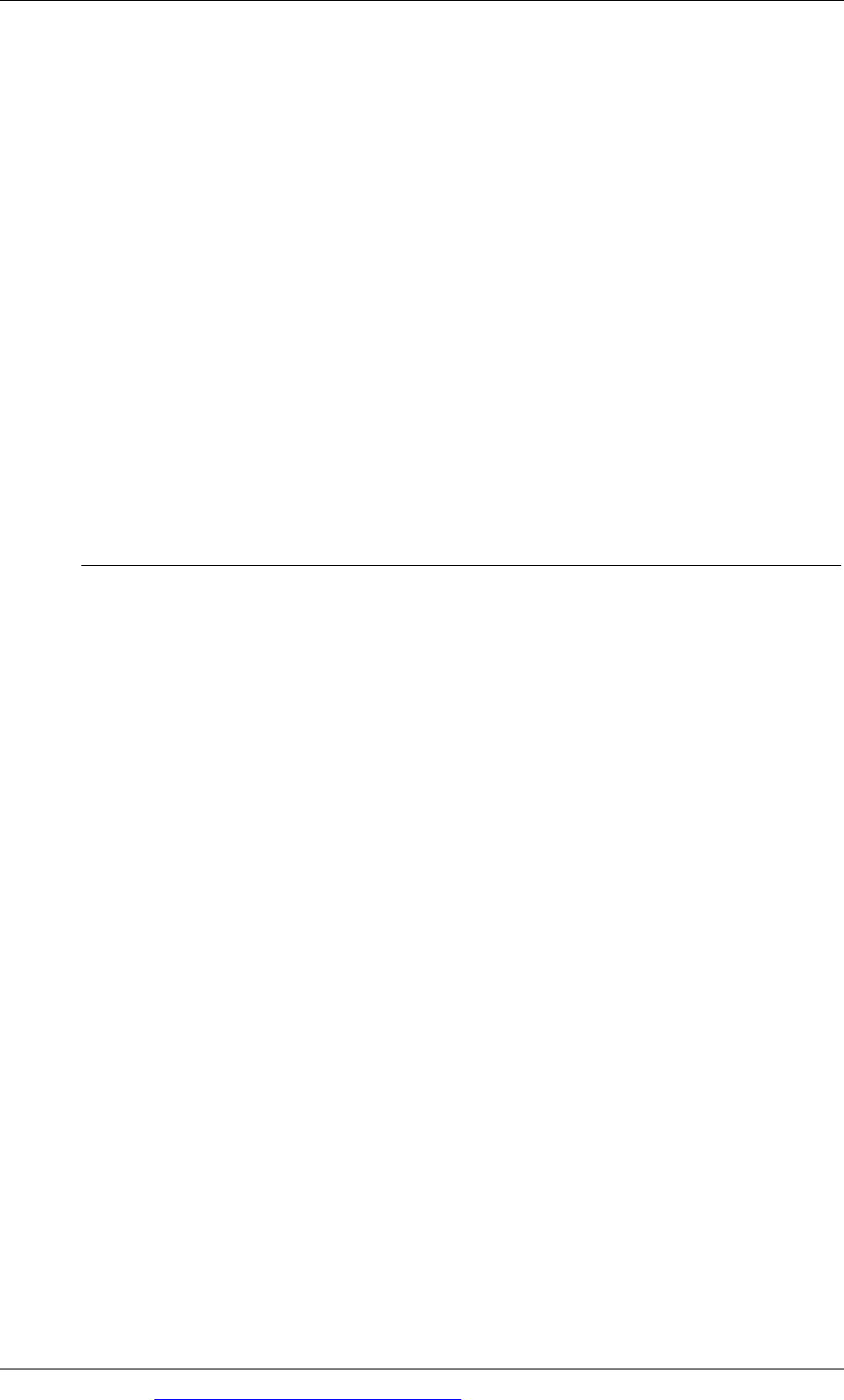
Practice questions
© EWP Go to www.emilewoolfpublishing.com for Q/As, Notes & Study Guides 425
(2) Grab will enter into an advance hire agreement contract for the coming year at
one of three levels – high, medium or low – which correspond to the
requirements of a high, medium or low level of orders obtained.
(3) The level of orders obtained will not be known when the advance hire
agreement contract is entered into. Probabilities have been estimated by
management as to the likelihood of the orders being at a high, medium or low
level.
(4) Where the advance hire agreement entered into is lower than that required for
the level of orders actually obtained, a premium rate must be paid to obtain
the additional plant and machinery required.
(5) No refund is obtainable where the advance hire agreement for plant and
machinery is at a level in excess of that required to satisfy the site clearance
and preparation orders actually obtained.
A summary of the information relating to the above points is as follows:
Level of orders Sales revenue
Probability
Plant and machinery hire costs
Advance
hire
Conversion
premium
$000
$000
$000
High 15,000
0.25
2,300
Medium 8,500
0.45
1,500
Low 4,000
0.30
1,000
Low to medium
850
Medium to
high
1,300
Low to high
2,150
Variable cost (as a percentage of turnover) 70%
Required
(a) Prepare a summary which shows the forecast net margin earned by Grab for
the coming year for each possible outcome.
(b) On the basis of maximising expected value, advise Grab whether the advance
contract for the hire of plant and machinery should be at the low, medium or
high level.
(c) Explain how the risk preferences of the management responsible for the
choice of advance plant and machinery hire contract may alter the decision
reached in (b) above.
25 Zero based budgeting
State briefly where zero-based budgeting is likely to be of the greatest value and
suggest how often ZBB should be used.
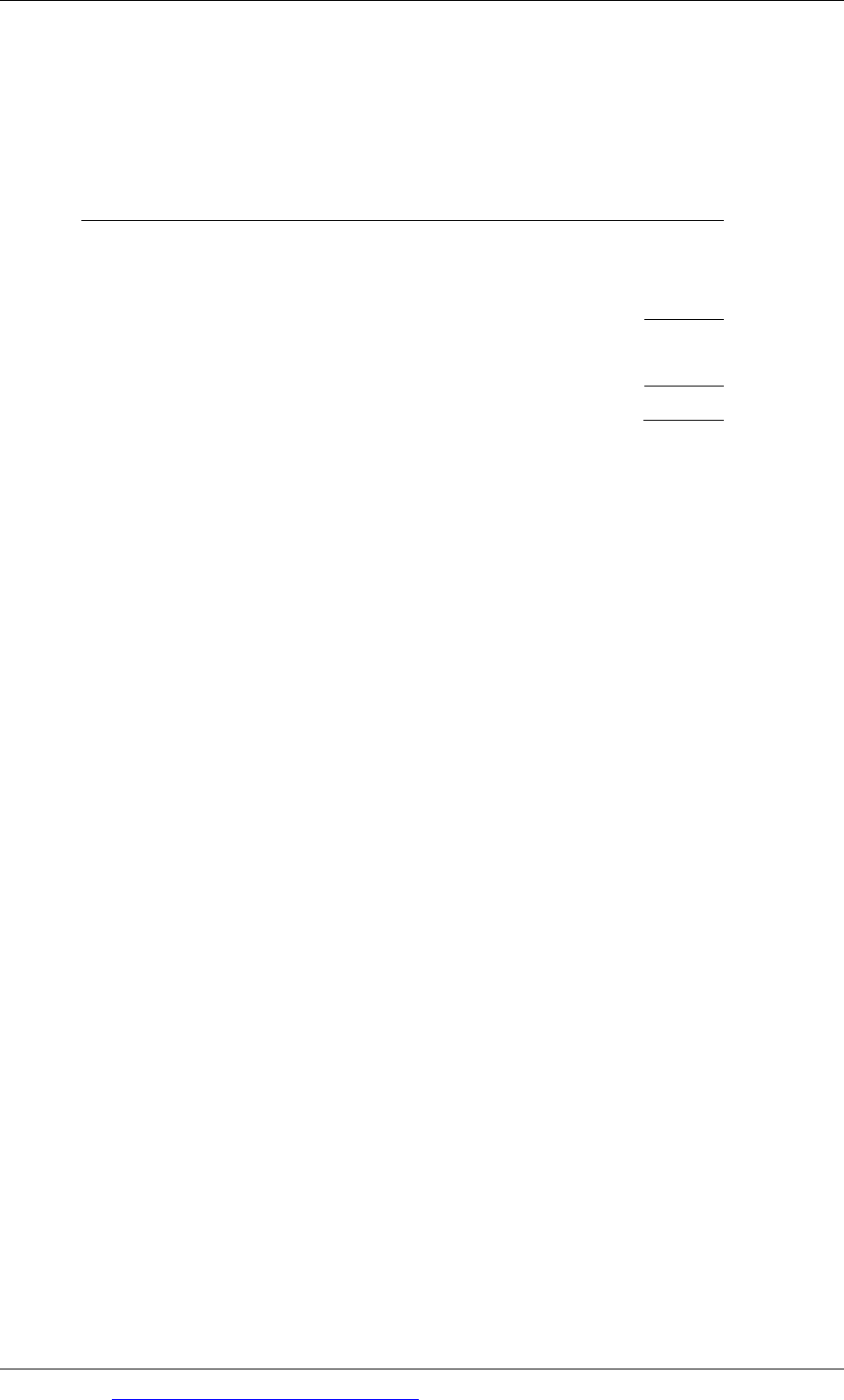
Paper F5: Performance management
426 Go to www.emilewoolfpublishing.com for Q/As, Notes & Study Guides © EWP
26 Learning
A company has developed a design for a new product, the Widgette. It intends to
sell the product at full production cost plus a profit margin of 40%. The estimated
production cost and selling price for the first unit of the Widgette are as follows:
$
Direct materials 2,000
Direct labour (200 hours at $15 per hour) 3,000
Fixed production overhead ($20 per direct labour hour) 4,000
Full production cost 9,000
Profit margin (40%) 3,600
Selling price 12,600
The company’s management expects reductions in the time to produce subsequent
units of the Widgette, and an 80% learning curve is expected.
A customer has expressed an interest in buying units of the Widgette, and has asked
the following questions:
(1) If we bought the first Widgette for $12,600 and immediately ordered another
one, what would be the selling price for the second Widgette?
(2) If we waited until you have sold the first two Widgettes to another customer,
and then ordered the third and the fourth units that you produce, what will be
the average price for the third and fourth units?
(3) If we decided to buy eight Widgettes immediately, and asked you to quote a
single price for all eight units, what price would you charge?
Required
(a) Answer each of these questions, assuming that the policy of the company
remains to make a profit margin of 40% on every unit that it makes and sells.
(b) List three limitations of learning curve theory.
27 Greenears
Greenears is a new business producing woollen hats, which it makes in small
batches of a standard size. It estimates that the first batch of a new design of hand-
made hats will have a labour cost of $2,000. There will be an 85% learning curve
effect for subsequent batches.
In month 1 production is 5 batches, and in month 2 production is 7 batches.
Required
Estimate the total labour cost in month 2 for making the hats.
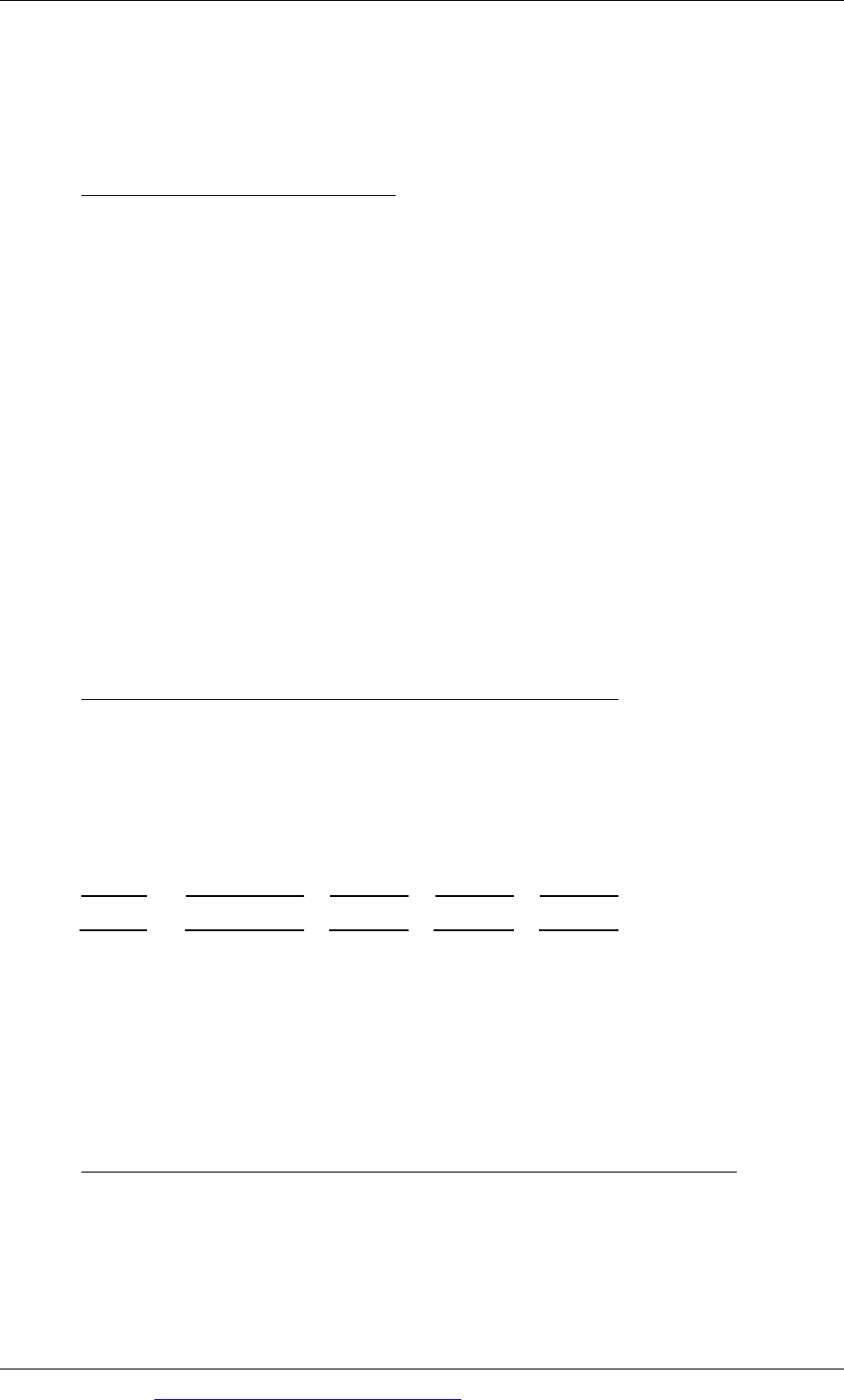
Practice questions
© EWP Go to www.emilewoolfpublishing.com for Q/As, Notes & Study Guides 427
28 Regression
A company has achieved the following total sales in each year for the past five
years:
Year Total sales
$ million
20X4 = Year 1 12
20X5 = Year 2 15
20X6 = Year 3 15
20X7 = Year 4 18
20X8 = Year 5 19
Required
(a) Use linear regression analysis to establish a formula for the trend line in sales,
and use this formula to estimate what total sales should be in Year 6 and Year
7.
(b) Calculate the correlation coefficient to decide how much reliance you can
place in your forecasts.
To produce your answer, you can make use of the following calculations:
Year Total sales
x y xy
x
2
y
2
1 12 12
1
144
2 15 30
4
225
3 15 45
9
225
4 18 72
16
324
5 19 95
25
361
15 79 254
55
1,279
29 Flexed budget
LAW operates a system of flexible budgets and the flexed budgets for expenditure
for the first two quarters of Year 3 were as follows:
Flexed budgets - quarters 1 and 2
Activity Quarter 1
Quarter 2
Sales units 9,000
14,000
Production units 10,000
13,000
Budget cost allowances $
$
Direct materials 130,000
169,000

Paper F5: Performance management
428 Go to www.emilewoolfpublishing.com for Q/As, Notes & Study Guides © EWP
Production labour 74,000
81,500
Production overhead 88,000
109,000
Administration overhead 26,000
26,000
Selling and distribution overhead 29,700
36,200
Total budgeted cost 347,700
421,700
The cost structures in quarters 1 and 2 are expected to continue during quarter 3 as
follows:
(a) The variable cost elements behave in a linear fashion in direct proportion to
volume. However, for production output in excess of 14,000 units, the variable
cost per unit for production labour increases by 50%. This is due to a
requirement for overtime working. The extra amount is payable only on the
production above 14,000 units.
(b) Fixed costs are not affected by changes in activity levels.
(c) The variable elements of production costs are directly related to production
volume.
(d) The variable element of selling and distribution overhead is directly related to
sales volume.
Required
Prepare a statement of the budgeted cost allowance for quarter 3. The activity levels
during quarter 3 were:
Units
Sales 14,500
Production 15,000
30 Cost estimation
The following recorded monthly costs of production will be used to estimate fixed
costs per month and the variable cost per unit:
Output
Total
cost
000 units $000
17 63
15 61
12 52
22 74
18 68
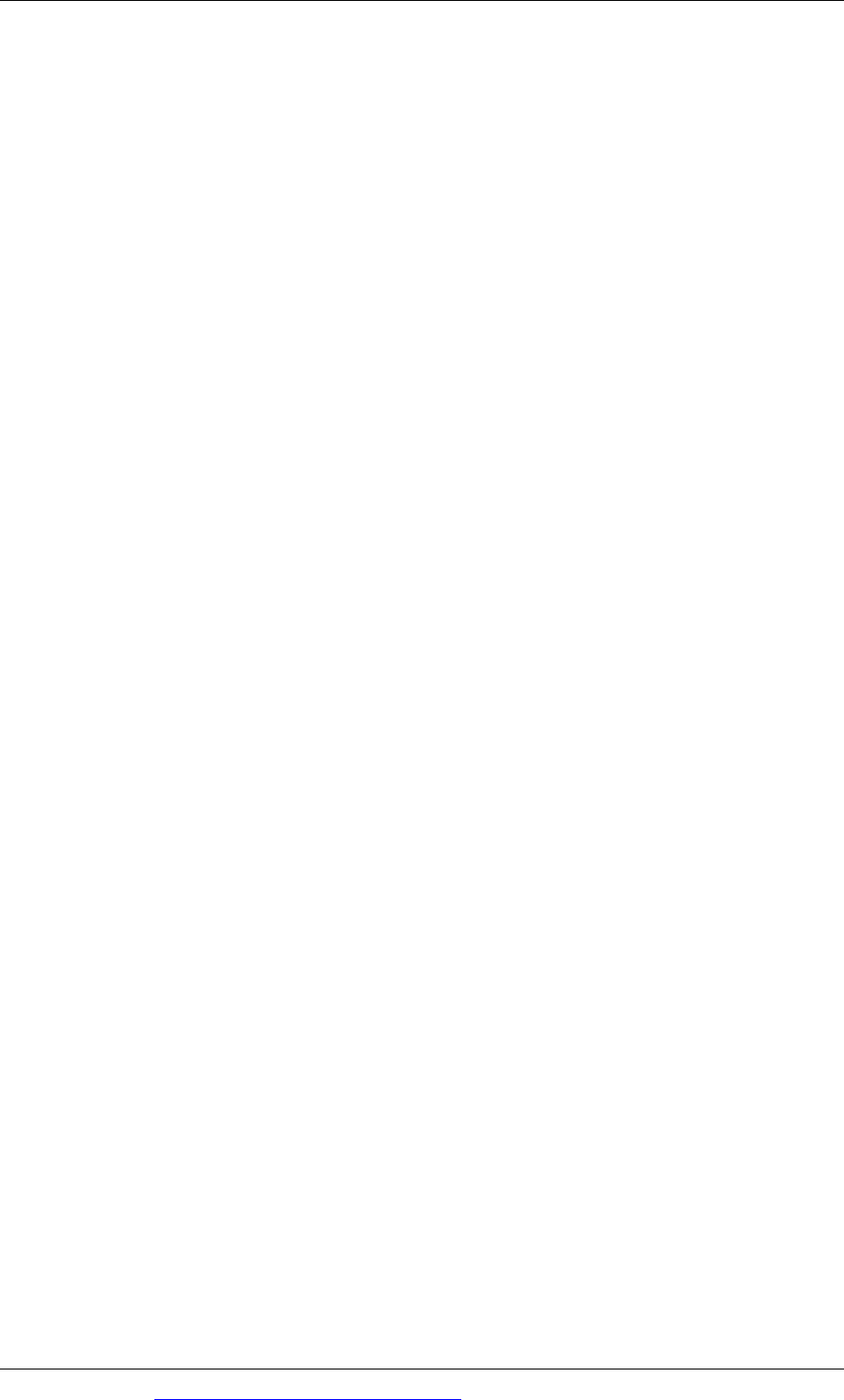
Practice questions
© EWP Go to www.emilewoolfpublishing.com for Q/As, Notes & Study Guides 429
Required
(a) Using the high low method, estimate the fixed costs per month and the
variable cost per unit. Use your estimate to budget the total costs in a month
when output is 15,000 units.
(b) Using linear regression analysis, estimate the fixed costs per month and the
variable cost per unit. Use your estimate to budget the total costs in a month
when output is 15,000 units.
(c) Calculate the correlation coefficient and comment on what it shows.
31 Time series
Seasonal Sales Company is preparing sales forecasts. It has used historical records of
sales in every three months to establish the following trend line for sales and
seasonal variations. Sales in each quarter are higher or lower than trend because
seasonal factors affect sales demand.
Derived from historical sales data
Quarter
Trend in quarterly
sales
Seasonal variation
for the quarter
$000 $000
3 1,200 – 12
4 1,240 – 20
5 1,281 + 26
6 1,323 + 6
7 1,357 – 14
8 1,400 – 17
9 1,435 + 22
10 1,476 0
11 1,520 – 7
12 1,568 – 17
13 1,604 + 30
14 1,638 + 3
The trend line data has been used to establish a forecast trend in quarterly sales.
This is (in $000) 1,080 + 40P where P is the period number.
Required: Prepare a sales forecast for quarters 17 – 20, and comment briefly on the
reliability of your forecast.

Paper F5: Performance management
430 Go to www.emilewoolfpublishing.com for Q/As, Notes & Study Guides © EWP
32 Reconcile
A company makes a single product and uses standard absorption costing. The
standard cost per unit is as follows:
$ per unit
Direct materials 8
Direct labour 6
Fixed production overheads 12
26
Budgeted production is 14,000 units per month. Last month, actual production was
14,800 units, and actual costs were as follows:
Total costs
$
Direct materials 125,000
Direct labour 92,000
Fixed production overheads 170,000
387,000
Required
Prepare a statement for the month that reconciles budgeted costs, standard costs
and actual costs
33 Simple variances
(a) Z Company uses a standard costing system and has the following labour cost
standard in relation to one of its products:
4 hours of skilled labour at $6.00 per hour: $24.00
During October, 3,350 units of this products were made, which was 150 units
less than budgeted. The labour cost incurred was $79,893 and the number of
direct labour hours worked was 13,450.
Required
Calculate the direct labour rate and efficiency variances for the month.
(b) Company J uses a standard costing system and has the following data relating
to one of its products:
$ per
unit
$ per
unit
Selling price
9.00
Variable cost 4.00
Fixed cost 3.00
7.00
Profit
2.00
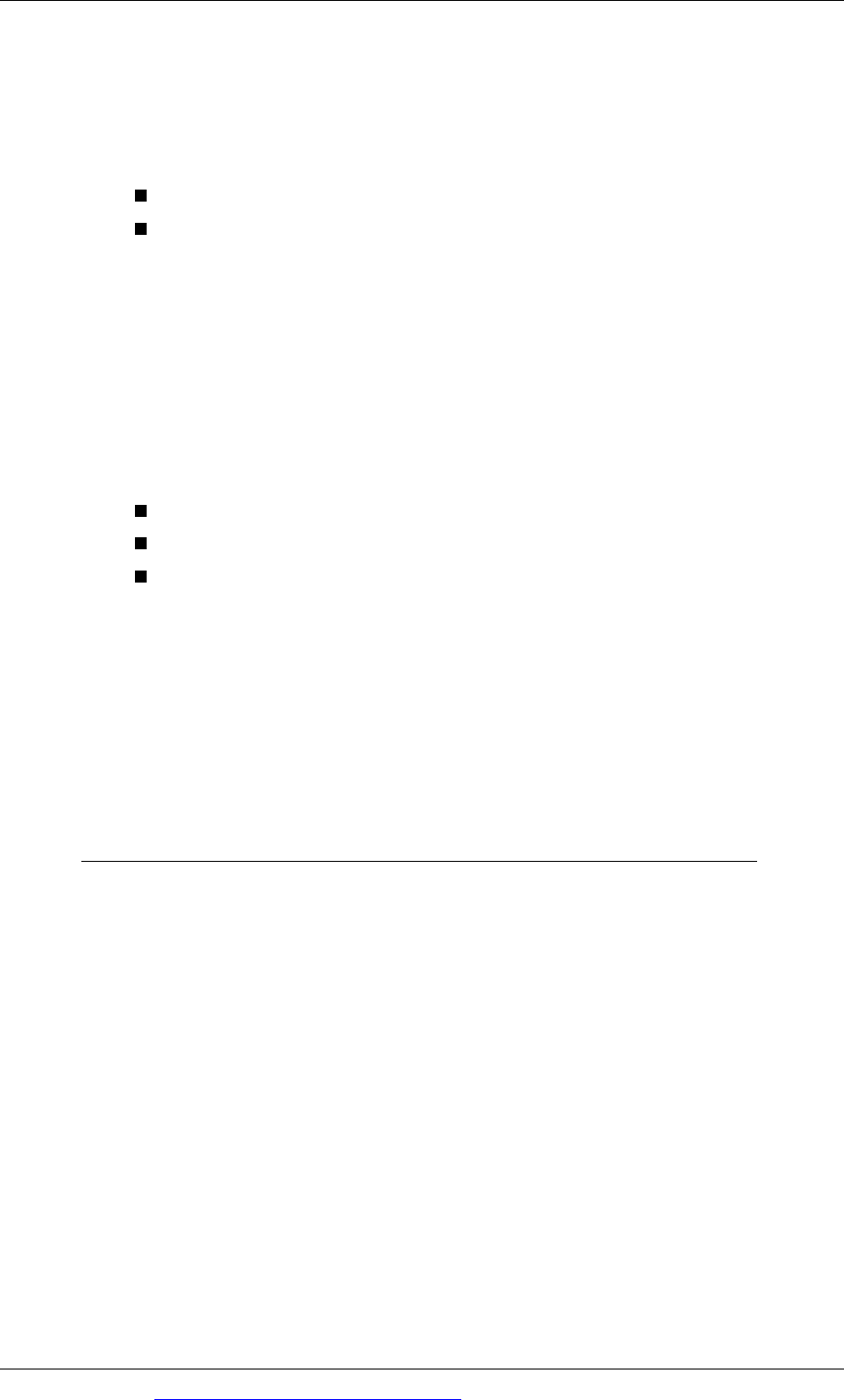
Practice questions
© EWP Go to www.emilewoolfpublishing.com for Q/As, Notes & Study Guides 431
The budgeted sales for October Year 5 were 800 units, but the actual sales
were 850 units. The revenue earned from these sales was $7,480.
Required
Calculate the sales price and sales volume variances for October using:
standard absorption costing
standard marginal costing.
(c) The budget was to produce 15,000 units. The standard fixed production cost of
a product is $20, which is 4 hours at a rate of $5 per direct labour hour. Actual
production was 14,600 units and actual fixed production overhead
expenditure was $325,000. The production output was manufactured in 58,000
hours of work.
Required
Calculate:
the fixed production overhead total cost variance
the fixed production overhead expenditure variance and volume variance
the fixed production overhead efficiency variance and capacity variance
34 Manufacturing cost variance
A manufacturing company uses a standard absorption costing system in accounting
for its production costs.
The standard cost of a unit of product is as follows:
Standard
quantity
Standard
price/rate
Standard
cost
$
$
Direct materials 5 kilos 6.00
30.00
Direct labour 20 hours 4.00
80.00
Variable production overhead 20 hours 0.20
4.00
Fixed production overhead 20 hours 5.00
100.00
The following data relates to Period 1:
Budgeted output 25,000 units
Actual output - produced 20,000 units
Units sold 15,000 units
Materials put into production 120,000 kilos
Materials purchased 200,000 kilos
Direct labour hours paid 500,000 hrs
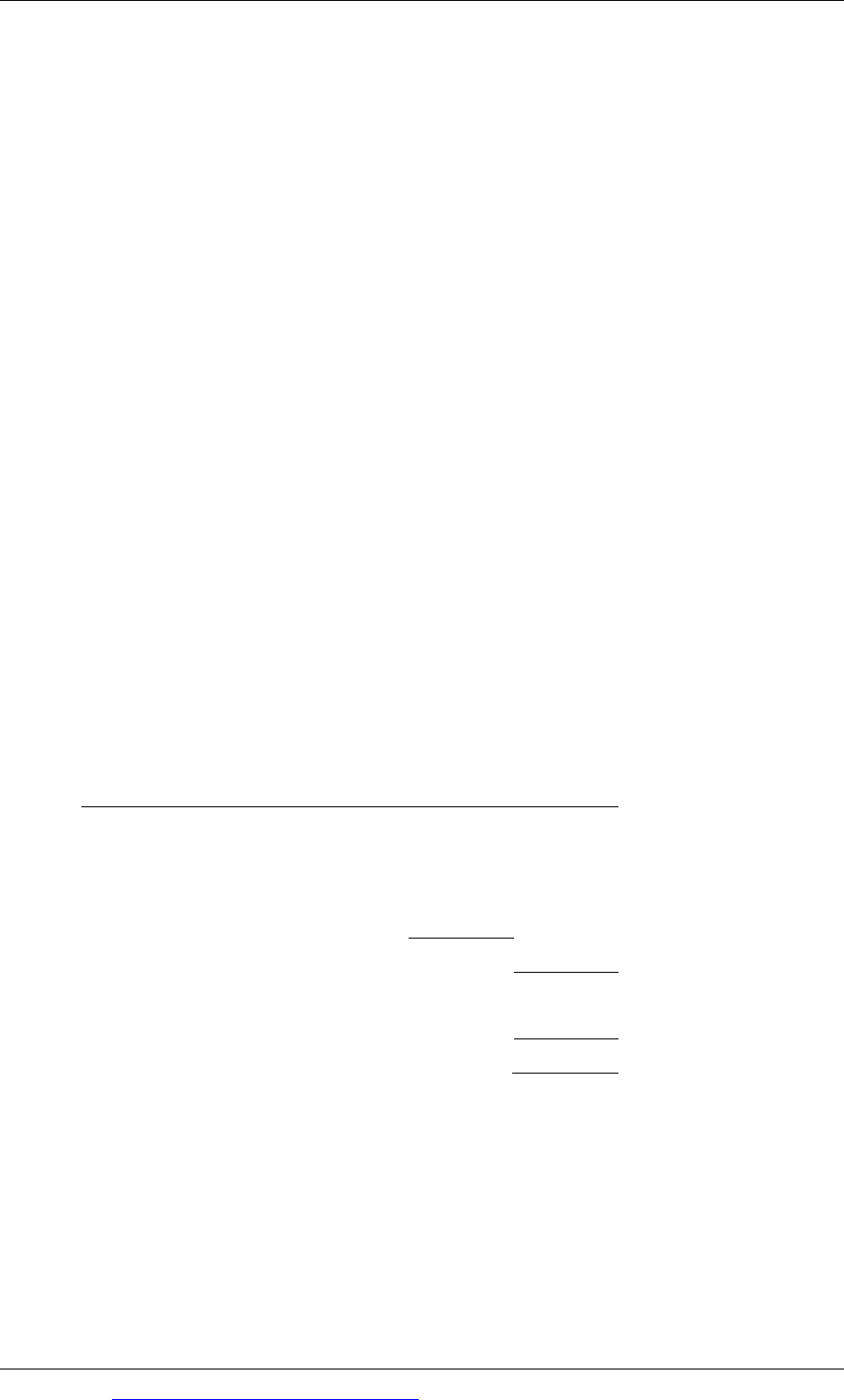
Paper F5: Performance management
432 Go to www.emilewoolfpublishing.com for Q/As, Notes & Study Guides © EWP
Due to a power failure 10,000 hours were lost.
Cost of materials purchased and used $825,000
Rate per direct labour hour $5
Variable production overhead $70,000
Fixed production overhead $2,100,000
Required
Calculate, for Period 1:
1 the material price variance
2 the material usage variance
3 the direct labour rate variance
4 the direct labour idle time variance
5 the direct labour efficiency variance
6 the variable overhead total cost variance
7 the fixed overhead expenditure variance
8 the fixed overhead volume variance
9 the manufacturing cost variance.
35 Variances and operating statements
Standard data per unit of Product Q is as follows:
$ per
unit
$ per
unit
Standard sales price
6.00
Direct labour cost 0.64
Direct material cost 3.00
Variable production overheads 0.16
3.80
Contribution
2.20
Fixed overheads
0.20
Profit
2.00
The budgeted production and sales volume for Product Q was 12,000 units. Budget
for 2,400 direct labour hours (12,000 units):
5 units to be produced per hour
Standard labour cost is $3.20 per hour
Standard material cost is $1.50 per kilogram and each unit requires 2 kilos
Budgeted fixed overheads $2,400
Budgeted variable overhead cost per direct labour hour = $0.80.
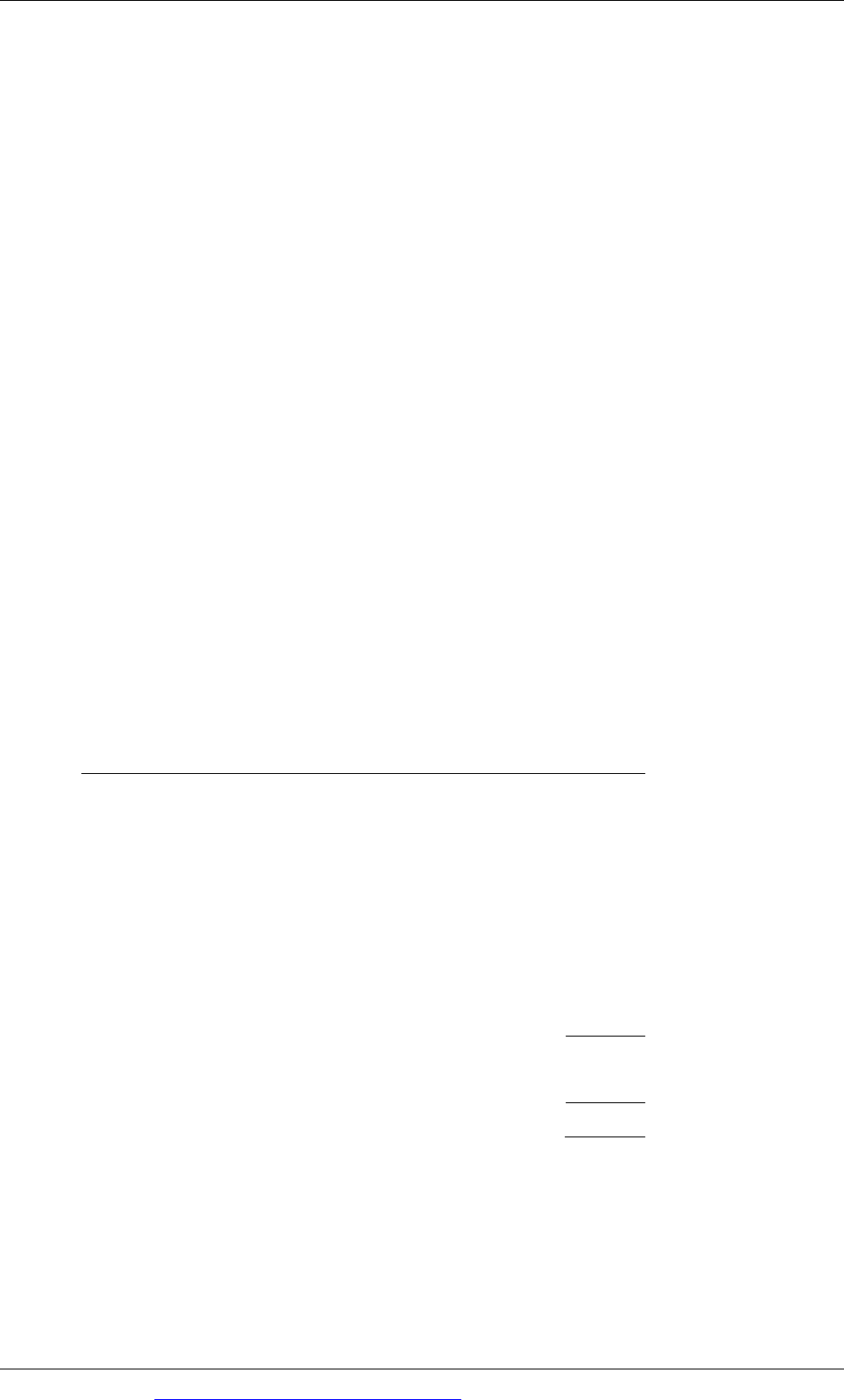
Practice questions
© EWP Go to www.emilewoolfpublishing.com for Q/As, Notes & Study Guides 433
Actual results for the same period:
11,500 units were manufactured
2,320 direct labour hours were worked, and cost $7,540
25,000 kilos of direct material were purchased (and used) at a cost of $1.48 per
kilogram.
Inventory is valued at standard cost of production.
Actual variable overheads were $1,750
Actual fixed overheads were $2,462
10,000 units were sold for $62,600.
Required
Prepare operating statements for the period using:
(a) standard absorption costing and
(b) standard marginal costing.
To prepare the absorption costing operating statement, you should show the
variable overhead expenditure and efficiency variances, and the fixed overhead
expenditure and volume variances.
36 Standard costing
A manufacturing company produces a single product, the Sigma. The standard cost
card for Sigma is as follows:
Standard cost card $
Direcxt materials:
2 kilos of A at $2 per kilo 4.00
1 kilo of B at $6 per kilo 6.00
Direct labour:
3 hours at $6 per hour 18.00
Overheads:
Variable - 3 hours at $4 per direct labour hour 12.00
Fixed - 3 hours at $8 per direct labour hour 24.00
Total standard cost 64.00
Standard profit mark-up (25%) 16.00
Standard selling price 80.00
The company planned to produce 10,000 units of Sigma in the month of April
(budgeted fixed overheads for the month being $240,000).
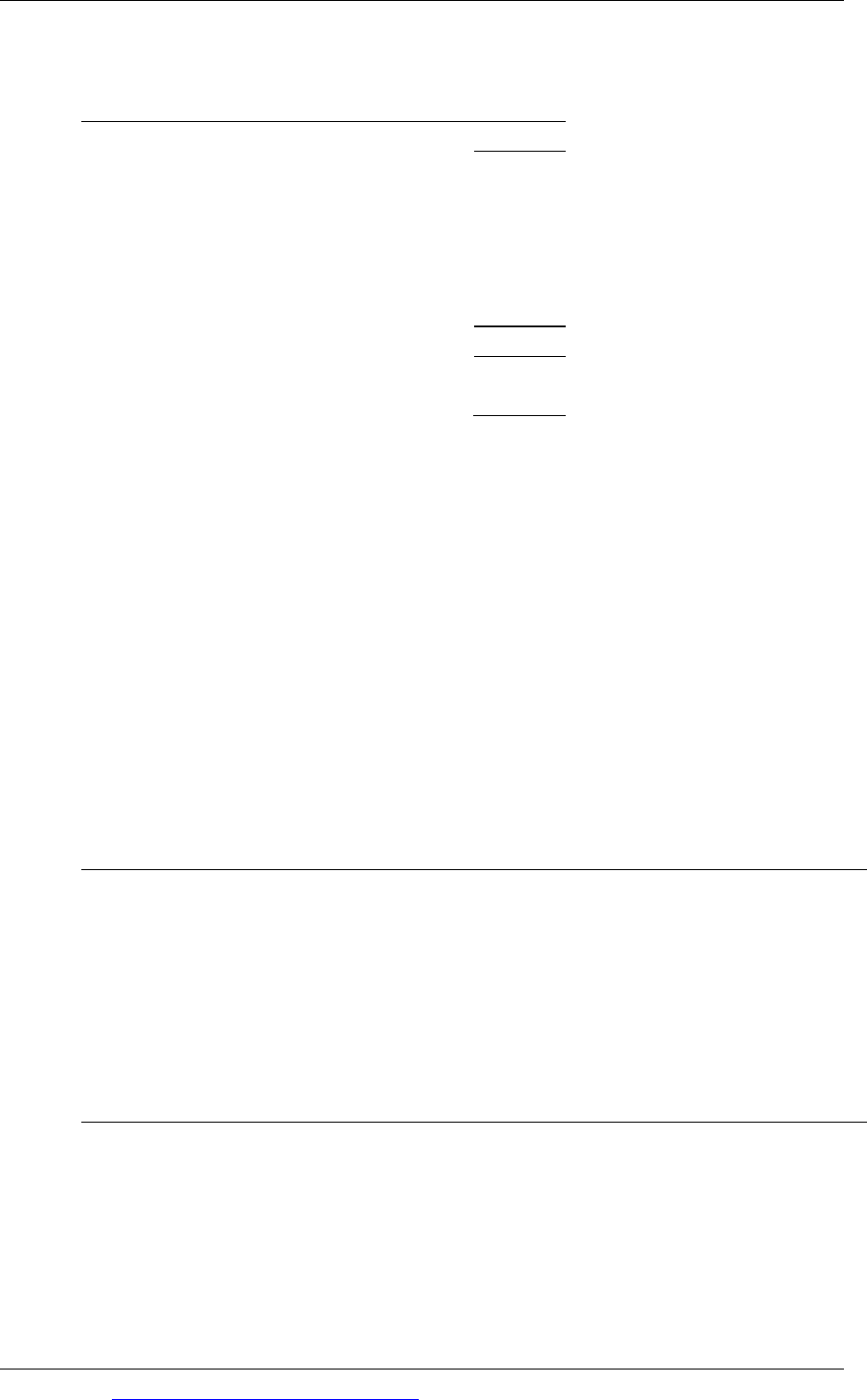
Paper F5: Performance management
434 Go to www.emilewoolfpublishing.com for Q/As, Notes & Study Guides © EWP
The actual results for April are as follows:
$
Sales: 9,000 units 756,000
Direct materials:
A: 19,000 kilos 41,800
B: 10,100 kilos 56,560
Direct labour: 28,500 hours 182,400
Variable overheads 104,000
Fixed overheads 232,000
616,760
Profit 139,240
Manufacturing overheads are charged to production on the basis of direct labour
hours. Actual production for the period was 9,000 units.
Required
(a) Prepare a reconciliation of budget and actual profit for the month.
(b) Explain how this would differ using standard marginal costing.
37 Sales variances
A company makes and sells three products Q, R and S. During a period, budgeted
and actual results were as follows:
Budget
Product
Total sales
revenue
Sales volume
Price
Margin
Total margin
$ units
$
$ $
Q 18,000 600
30
10 6,000
R 16,500 300
45
15 4,500
S 6,500 100
65
25 2,500
Actual
Product
Total sales
revenue
Sales volume
Price
Margin
Total margin
$ units
$
$ $
Q 14,560 520
28
8 4,160
R 14,210 290
49
19 5,510
S 5,670 90
63
23 2,070
Required
Calculate all relevant sales margin variances.
